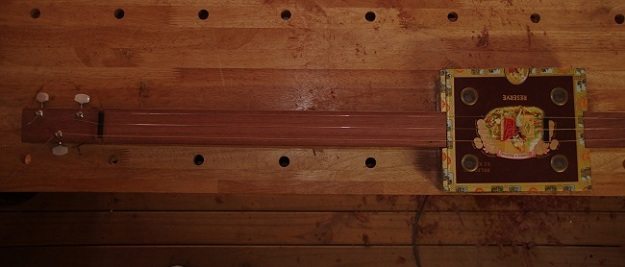Sound Holes
There’s one final task before you can put everything together – you need to make some sound holes for your Cigar Box Guitar. There are no strict guidelines for number or placement – there are plenty of theories and arguments online as to the perfect placement and number, but at least one sound hole is a must, otherwise your guitar will sound muted and dull. You can cut traditional F holes or simply drill a few holes around the periphery of the guitar. If you want to protect your guitar from extra wear and tear and make it look good to boot, some ventilation grommets or brass bushings work a treat.


Stringing and Tuning
The threaded rod bridge and nut of your Cigar Box Guitar are held to the guitar only by the tension of the strings, so it can take some fiddling to get them placed correctly. Placing the bridge around 7cm from the tail edge of the box seems to offer the best results with medium sized boxes, but it will probably take some tweaking to get the guitar to sound just the way you want it to.



Once you have the guitar strung and before you tune it, this is also a good time to check the action. The action (that’s how far the strings are positioned above the body of the guitar) on this build was deliberately left quite high for lap steel style play, but if you’re planning on doing some more traditional fingering you may want to see how things feel and use a rats tail file to deepen the nut groove if necessary.
When you’re happy with the way everything feels, tune your new CBG to any of the myriad standard tunings like G-d-g, D-A-d, g-b-d or d-f#-a (you can find an excellent starting guide HERE) and start playing. You may want to mark some of the key positions such as 5th, 7th and 12th on the neck or choose to keep it fretless. In any case, you now have a hand made, traditional blues guitar to add to the collection.

Ready to give it a go or have you already built your cigar box guitar? Don’t forget to share your thoughts via the comments box or we’ll never know what you think :)
This article was originally published in Australian Guitar magazine Issue #93
For more guitar related projects, check out our guitar hangar post!






